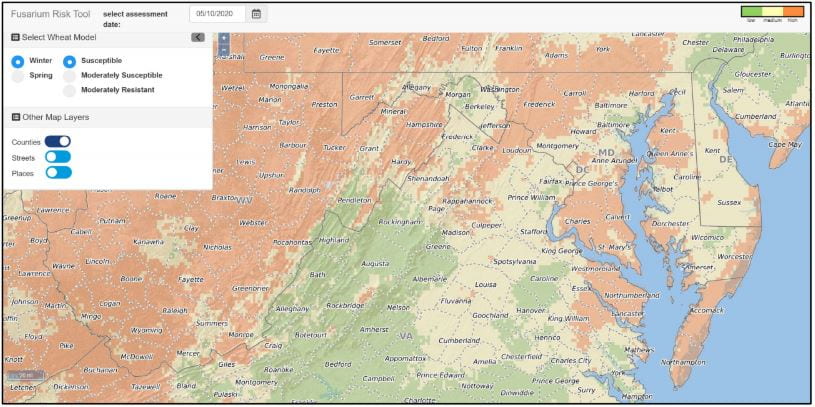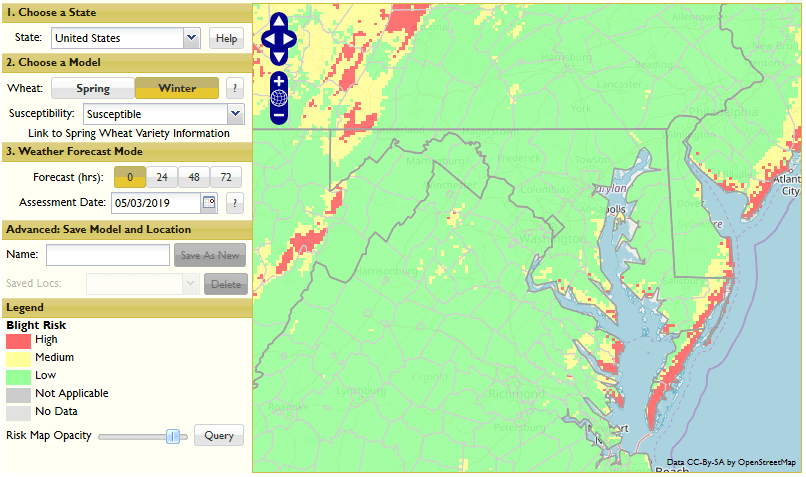Nidhi Rawat, Small Grains Pathologist
University of Maryland, College Park

Flowering is all finished across all counties of Maryland now, except for a few late planted fields in the northern part of MD that may still be flowering. Currently the risk of FHB is high in these areas and so FHB fungicides (Prosaro, Miravis Ace, Caramba) should be applied here. For most parts, wheat is now in the grain filling stage and should be ready for harvesting in the next couple of weeks. We experienced some showers this season, but the temperatures remained low, so symptom development in terms of bleached spikelets will be limited. It is advisable to get the DON content of the harvested grain analyzed before taking it to the market.
This is the last FHB risk commentary of the season, but feel free to contact me (email: nidhirwt@umd.edu) if you have any questions related to wheat diseases any time of the year!



